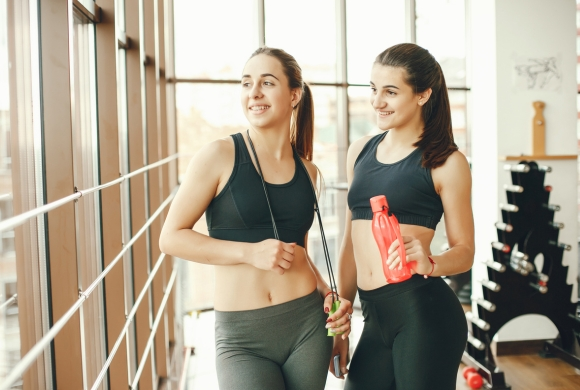Have you ever felt on edge at the gym because of your outfit? While it is a common experience, it doesn’t have to be. Choosing the right gym wear can boost your confidence and make your workout more enjoyable. In this blog post, we’ll guide you on what to wear to the gym, covering everything from basic pieces and accessories to essential etiquette tips.
Gym Wear: Beyond Just Looks
Many people think gym clothes are just about style, but there’s a science behind them as well. The fabric you choose can make or break your workout. Moisture-wicking materials like polyester, spandex, and nylon keep sweat at bay, ensuring you stay dry during intense sessions. Breathable fabrics help regulate body temperature, making sure you don’t overheat especially during those hot summer days.
The right fit and cut also play a crucial role. Tight clothes might restrict your movement, while loose ones might get in the way. That’s why it’s essential to find the balance that works best for your body type and the kind of workout you’re doing. Understanding the science behind gym wear sets the stage for choosing outfits based on your activities.
Gym Wear by Activity Type
Different workouts call for different outfits. For strength training, you need clothes that provide support and flexibility. When doing cardio or HIIT, lightweight, sweat-resistant attire is your best friend, allowing you to move freely and stay cool.
If you’re into yoga, soft, stretchable fabrics like cotton blends are ideal. They allow for a full range of motion while keeping you comfortable in poses. Versatility is key for CrossFit or mixed workouts. You need clothes that can handle anything, from lifting weights to jumping or running.
Choosing your gym wear based on the activity helps you perform better and makes your workout more enjoyable. But there’s more to gym wear than just function—let’s talk about stylish recommendations.
Stylish Recommendations on What to Wear to the Gym for Women
Choosing the right gym wear is crucial for both comfort and performance. Here's a breakdown of each essential item, its role during workouts, how to choose it, and a tip to get the most out of it.
1. Sports Bra
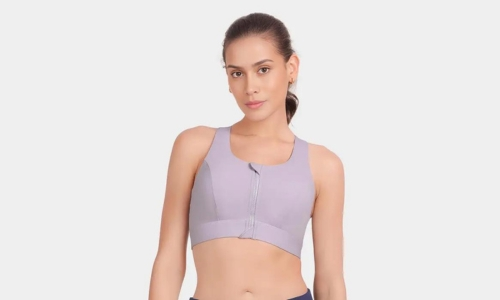
A sports bra is the foundation of your gym outfit. It provides the necessary support to minimize breast movement, reducing discomfort and the risk of tissue damage during exercise, especially in high-impact activities like running or aerobics.
How to Choose: Look for a sports bra that offers the right level of support based on your activity levels (High, medium, and low). Choose one with strong compression, encapsulation, and moisture-wicking fabric.
Pro Tip: Choose a sports bra with adjustable straps and a hook-and-eye closure for a customisable fit, especially if you have a larger or heavier bust.
2. Workout Top
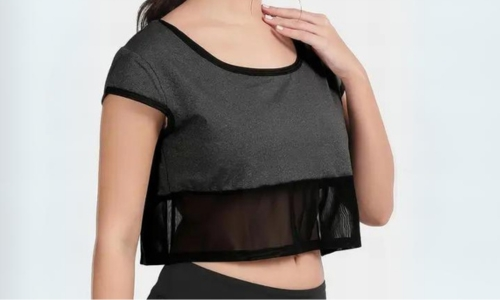
The workout top should provide comfort and breathability during your gym session. It should allow for a full range of motion while keeping you cool and dry. Tank tops or crop tops are common choices.
How to Choose: Choose a top that’s fitted but not too tight, allowing for airflow. Consider the type of activity when selecting between sleeveless, short-sleeve, or long-sleeve options.
Pro Tip: Go for tops with mesh panels or cutouts if you tend to sweat a lot.
3. Fitted T-Shirts
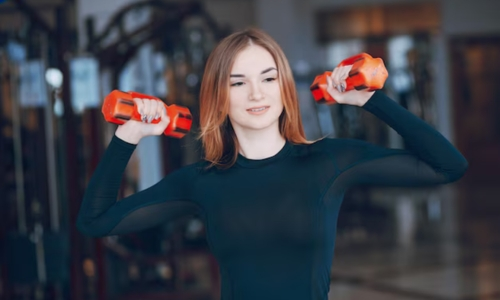
Fitted T-shirts provide a more streamlined look while ensuring comfort and mobility. They are versatile for various types of workouts.
How to Choose: Choose T-shirts made from lightweight, stretchy fabrics that move with you. A snug fit will prevent the shirt from getting in your way during exercises.
Pro Tip: Pick a T-shirt with a longer back hem to avoid it riding up during stretches or bending exercises.
4. Leggings or Shorts
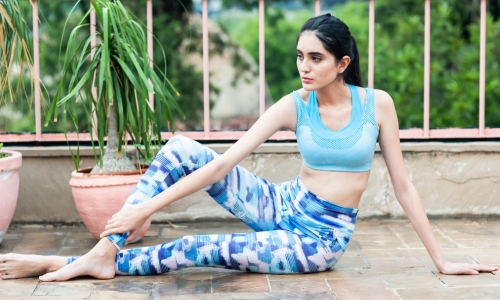
Leggings and shorts are essential for lower body workouts, providing flexibility, support, and a secure fit that won’t interfere with your movements.
How to Choose: There are different types of leggings. Look for a high-waisted design that stays in place and offers tummy support. If you prefer shorts, choose ones with a snug fit and an elastic waistband to prevent slipping.
Pro Tip: Opt for leggings or shorts with pockets to keep small essentials like your phone or locker key close by during your workout.
5. Yoga Pants
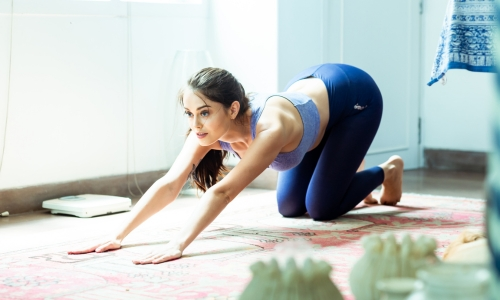
Yoga pants are designed for flexibility and comfort, making them perfect for yoga, Pilates, or stretching sessions.
How to Choose: Choose yoga pants with a high level of stretch and a smooth waistband that doesn’t dig in. Pants with soft, breathable fabrics like cotton blends work well for a comfortable fit.
Pro Tip: Look for yoga pants with a slight flare at the bottom to accommodate different poses without restriction.
6. Compression Shorts
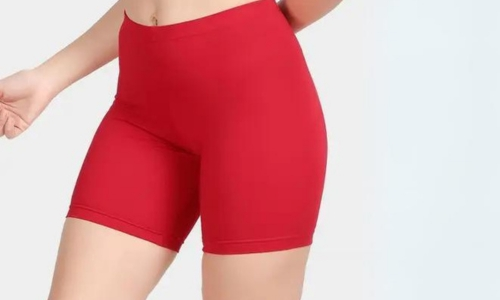
Compression shorts support your muscles and reduce fatigue by increasing blood flow. They are ideal for high-intensity workouts and long-distance running.
How to Choose: Choose compression shorts with a snug, second-skin fit. Ensure the fabric is breathable and has moisture-wicking properties to keep you dry.
Pro Tip: Wear compression shorts underneath looser shorts or a skirt for added support and comfort without compromising style.
7. Capri Pants
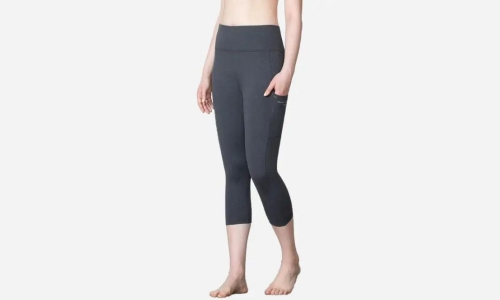
These pants provide a middle ground between shorts and full-length leggings, offering coverage and breathability, especially in warmer weather.
How to Choose: Look for snug capri pants but not too tight. A high-waisted design provides extra support, while stretchy fabric ensures comfort.
Pro Tip: Pair capri pants with a crop top or fitted T-shirt for a stylish and comfortable gym look.
8. Footwear
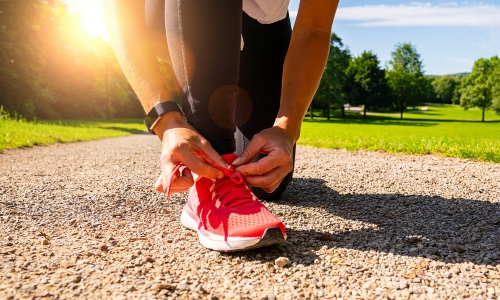
The right footwear is essential for protecting your feet, providing support, and enhancing performance during workouts. Different activities require specific types of shoes.
How to Choose: Match your footwear to your activity—running shoes with good cushioning and arch support for cardio, cross-trainers for various gym activities, or specialised shoes like flat-soled shoes for weightlifting. Ensure a snug fit and adequate grip for stability.
Pro Tip: To maintain optimal support and performance, replace your gym shoes every 6-9 months or when you notice signs of wear.
9. Socks
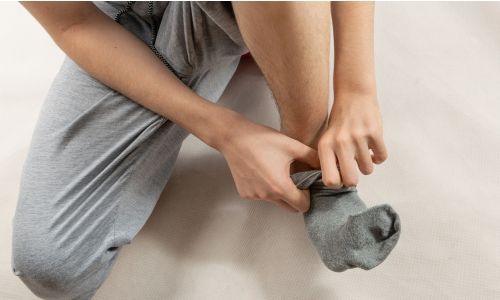
Socks protect your feet from blisters and provide extra cushioning. They also help with moisture management, keeping your feet dry.
How to Choose: Look for socks made with cushioning in key areas like the heel and ball of the foot. They can also help improve circulation during intense workouts.
Pro Tip: Choose low-cut or ankle socks for a seamless look with your gym shoes.
10. Accessories
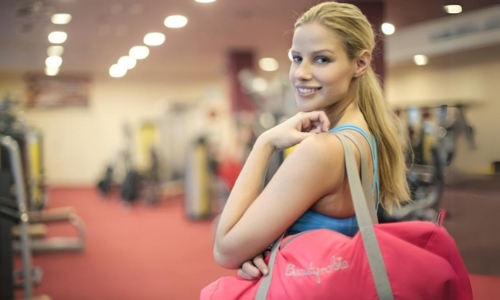
Accessories like headbands, gloves, and wristbands enhance comfort and functionality during workouts. And don’t forget your gym bag! It should be big enough to carry your essentials, from your water bottle to your change of clothes. If you’re tech-savvy, fitness trackers and smartwatches are great additions that can help you monitor your progress and stay motivated.
How to Choose: Choose accessories that are functional and match your workout needs—a headband to keep sweat away, gloves for better grip, or a tracker to monitor your progress.
Pro Tip: Use a sweat-resistant headband to keep hair and moisture away from your face, ensuring you stay focused during your workout.
11. Outerwear
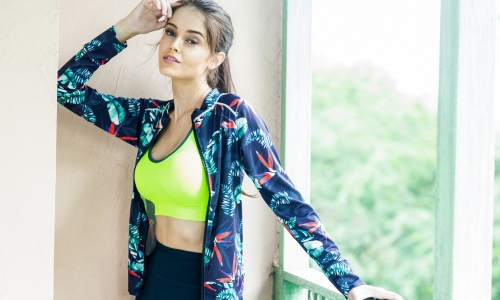
Outerwear like hoodies or jackets provides warmth and protection when heading to and from the gym, especially in cooler weather.
How to Choose: Choose lightweight, breathable outerwear that’s easy to remove and put back on. Look for features like zip pockets and adjustable hoods for added convenience.
Pro Tip: To stay warm without overheating, opt for a windbreaker jacket for outdoor runs or a fleece hoodie for cooler weather.
12. Comfortable Underwear
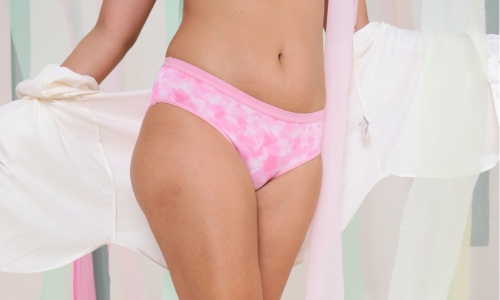
Comfortable underwear prevents chafing and ensures a smooth, irritation-free workout experience. It provides the foundation for your entire gym outfit.
How to Choose: Look for seamless underwear made from breathable materials. Ensure it has a snug fit without being too tight to avoid discomfort.
Pro Tip: Choose a style that suits your activity level—briefs for full coverage and comfort or thongs for a seamless look under tight leggings.
Layering Like a Pro: From Warm-Up to Cool-Down
Layering is a smart way to dress for the gym, especially when transitioning from warm-up to cool-down. Start with lightweight hoodies, jackets, or track pants that keep your muscles warm at the beginning of your session. As you heat up, you can easily shed these layers and get into the main workout with minimal fuss.
Once you’re done, your body needs time to cool down. A simple cotton T-shirt or a loose jacket helps your body transition back to its resting state without getting too cold.
The Role of Colors and Patterns
Colors aren’t just for fashion—they can impact your mood and performance at the gym. For instance, red energises and motivates, making it an excellent choice for intense workouts. Blues and greens are calming, perfect for yoga or stretching sessions.
Geometric prints can be motivating, while solid colours can help you stay focused. Mixing and matching these elements adds variety to your gym wardrobe and enables you to create a vibe that suits your workout goals.
Sustainable Gym Fashion
Sustainability is becoming more important in fashion, and gym wear is no exception. Choosing eco-friendly materials like organic cotton or recycled polyester helps reduce your carbon footprint. Supporting brands that prioritise ethical production practices ensures that you look good while you do good for the planet.
Gym Wear Etiquette
Following these simple etiquette guidelines can help make the gym a more pleasant and respectful place for everyone.
1. Hygiene and Cleanliness
Nobody likes working out next to someone in smelly, sweat-soaked clothes. Make sure your gym wear is clean and fresh. Shower before hitting the gym to start your workout feeling fresh. After your session, change out of your sweaty clothes as soon as possible and give them a good wash before the next use.
2. Respecting Others
While the gym is a place to work hard, it’s also a shared space, so it’s essential to consider how you impact others. Avoid loud music and occupying gym equipment for long durations. Listen to music in earphones and make sure to wipe off any sweat you may leave behind on the equipment. The goal is to create a positive and motivating environment for everyone.
3. Proper Storage
Gyms can get crowded, and nothing disrupts a good workout like tripping over someone’s gym bag or finding the bench covered in belongings. Keep your gear organised and out of the way. Use lockers or designated storage areas for your bag, and be mindful of where you place your things. This helps maintain a tidy space and shows consideration for others who want to make the most of their workout.
Conclusion
Ultimately, what you wear to the gym should make you feel confident and ready to take on any challenge. Whether you prefer bright colours, traditional prints, or minimalist designs, the key is to find what works for you. When you feel good in your clothes, your performance and attitude shows it.
So next time you’re getting ready for the gym, remember—it’s not just about what to wear to the gym, but how it makes you feel. Find the best gym wear that suits your style, supports your goals, and helps you break a sweat in style.

